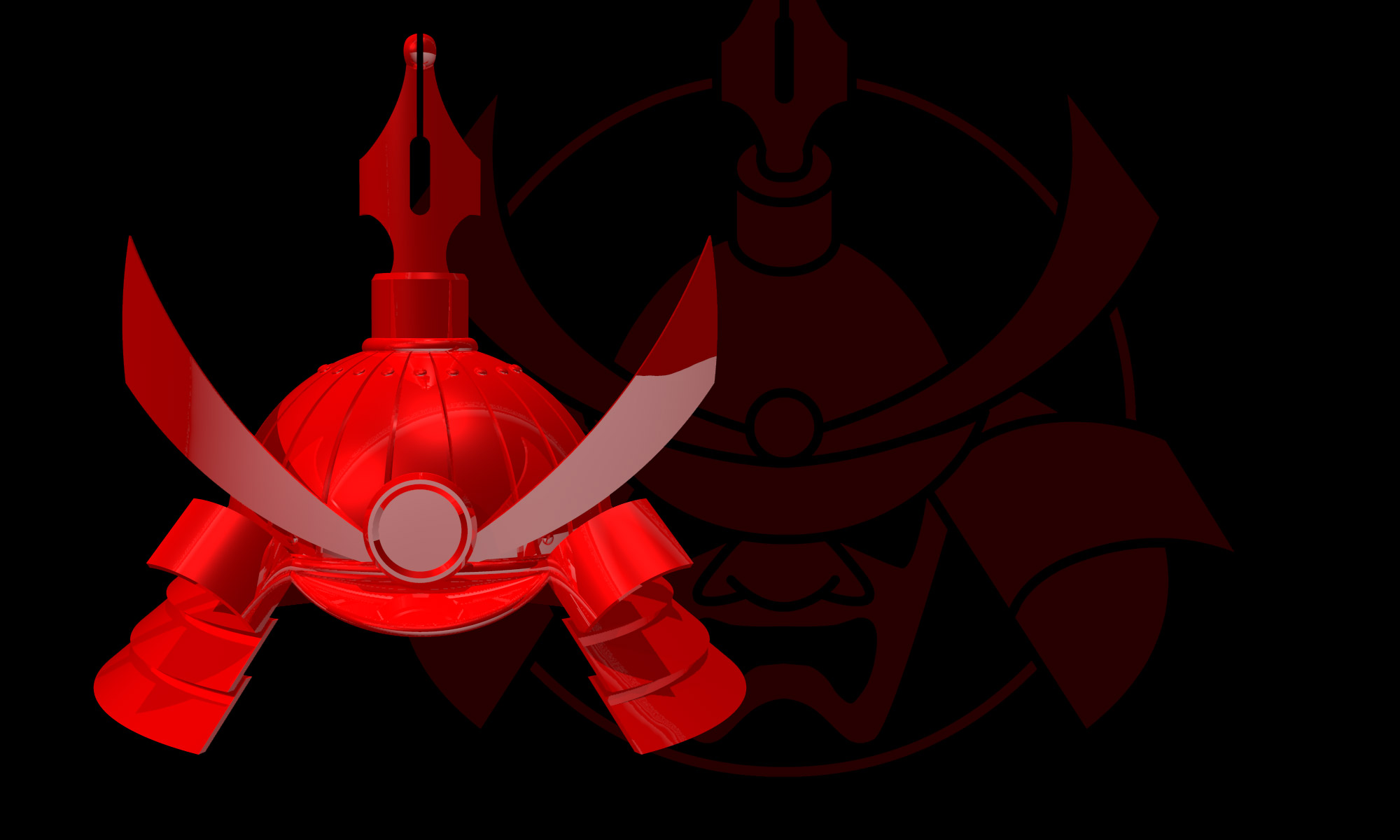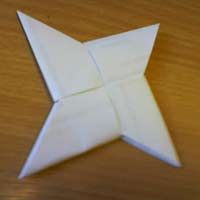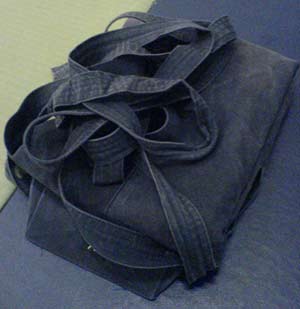So . . . a new year, a new animation. The new Fudebakudo index page features a ninjaful animation.


But a sword dipped in ink, now, that's a good compromise
So . . . a new year, a new animation. The new Fudebakudo index page features a ninjaful animation.
So, in the UK we are once more having the "Samurai Sword" debate in the press as the government heads towards banning them. There is a lot wrong with this, but it's dangerous to say so because the legislation is a reaction to nutters who slash at people with such swords, and to argue against such legislation makes it sound like you think people should be allowed to do it. Obviously, anyone slashing with a "Samurai Sword" ought to be incarcenated — the Japanese katana is a filing weapon, not a slashing weapon, tsk tsk, but strangely that's not the point that many commentators pick up on when these incidents are reported.
No, the problem is that it's already illegal to attack someone with a sword, whether that sword is Japanese or European. Passing a law to make ownership of such a thing illegal unless you have a good excuse is fundamentally silly for a number of reasons. But the main one is that it is too specific. The law will need to decide and declare when a sword is a sword and not a machete. For example, the nutters who buy their "Samurai Swords" from the internet are encouraged to buy them in pairs, and the shorter of the two (ahem, the wakizashi) is barely longer than a carving knife (oh all right, a big carving knife) or, say, a carpenter's saw, so it's not quite as simple as saying "sword".
And then you have the problem of what exactly constitutes a good excuse. The problem is that being enrolled as student of a martial art may well constitute a good excuse. That's troubling because a sizable proportion of people doing martial arts, as the normal people who train can attest, absolutely are nutters. (Earlier this year there was a petition on the Number 10 website on which people could sign their disapproval of the forthcoming "Samurai Sword" ban. You can bet that that list of names is now the first item in the folder marked "Potential Nutters" in the "Samurai Sword" unit of the Home Office — of course not everybody on that list is a dangerous nutter, just some (many) of them, and it's a good a place to start as any).
The bizarre thing about this is that iaido, of all the martial arts, is one of the best at self-policing. Not because of the heightened moral standards that the rituals of the art require, or the rigorous selection criteria of the registered teachers in the UK. It's because iaido, perhaps with the exception of t'ai chi, is the least rewarding art for someone looking for some instant gratification. It's not an art that really needs legislating, so it's unfortunate that they are unhelpfully at the sharp end of the media attention on "Samurai Swords". You spend fifteen years making your knees hurt and your thighs tremble before you can feel confident about slashing — uh, cutting — at anything. Of course I'm not a criminal profiler, and people who put themselves through this may well be nutters (inevitably I know several (you know who you are)) but not the kind of nutters we need to be worrying about.
The legislation on gun ownership in the UK was changed after terrible public shootings such as Hungerford. Maybe that has worked. I'm used to living in a society where unarmed police shout "Stop! Or I'll shout stop again!" and it's still a wee bit alarming to see a real gun in real life (such as the ones on display for shooting terrorists at Heathrow airport) and naturally I am used to seeing this as a good thing. But one silly consequence of the law was that the GB Olympic shooting teams have to train on the continent, and legislation was changed for the Commonwealth Games (and will need to be excepted again for the 2012 Olympics). Will the "Samurai sword" ban affect the UK Fencing Teams? Will their swords be excepted because they are European? Or because they aren't sharp enough? A legal test for the sharpness of a sword? Oh dear. Ultimately this will end up as lawyers arguing as to how many fairies can dance on the tip of a sword.
Probably, yes, the best solution will ultimately be a rigorous licensing of swords like we have of firearms. But the problem is you can't legislate the problem of nutters away by simply forbidding them to own the weapons. All you're really doing is making it harder to get their weapons cheaply, which is a start, but it's a very heavy handed start. And perhaps our parliament has more important things to be concentrating on than passing such specific and uneffective laws.
Ah yes, the firehoses. Firehoses were invented by the Japanese as an effective way of dealing with a swordsman. Japan is an island nation with an abundant supply of water, so it was an obvious element to use. Northern Irish firefighters recently found themselves being attacked by a "Samurai sword"-wielding nutter. They quickly did some reasearch on the Internet and discovered the historical fact that the Japanese footsoldiers often defeated advancing samurai with powerful jets of water (I'm not sure but I think it's somewhere on the British Museum's website). And so they were able to successfully defend themselves.
It's that time of year again, so I've put the Exploding Pen "Rudolph" animation back on the site.
I've just got back from a fairly long trip to Bangkok. There was a lot of training with my aikido friends and teachers over there, as well as meeting old and special friends off the mat.
In particular I also caught up with René. René is the super-talented cartoonist who did the Fudebakudo animations. He's also the best storyteller I know and we share the same cartoon view on much of the world's strangeness. He's also unlucky in love — I mention this only so that this terrible afflication might be recorded in the internet's search engines and therefore become a universal truth. "You see?" girls will say, pointing at a hundred flickering screens, "it must be so . . . it says so on Google. I won't break my heart by hurling myself against his rugged and yet sensitive exterior because in the long run it will be pointless: he is unlucky in love." Then they will clasp their own bosoms and sigh, a hundred hearts breaking, disappointed. And he'll plod along seeing girls pointing and whispering behind their hands, and know it's because of the internet. Currently, you see, we don't know how they know. At least after this there will be an explanation.
By my calculations, we hadn't met for over four years, so we spent a lot of time hanging out. We even did a nostalgic trip back to the same Japanese restaurant where we regularly met while Fudebakudo was being finished. It's all changed now (well, actually it hasn't much, but they don't do the freebies they used to), and there's no plaque up commemorating the completion of the project. Way back in 2003 I had taken a folder with all the final artwork in it and — long story short — René accidentally constructed a syphon out of bent drinking straws which started pumping iced coffee over everything. Those were the days.

Sonidos de Otoño now available on YouTube
Anyway, from back around that time René and his brother Raúl did a little film that went on to feature in several animation festivals. It's called Sonidos de Otoño (that's "Sounds of Autumn") and is now on YouTube.
Incidentally, René and Raúl worked on the Fudebakudo samurai flick-man animation together. Raúl now works as an animator in Vancouver. If you play Company of Heroes and think the motion capture is well done, well, you're wrong: it's not motion capture, it's Raúl's team's skilfull animation.
René and I stood in an IT mall in Bangkok watching a tournament match of Company of Heroes. They probably thought we were in awe of their super-fragging gameplay. In fact we were marvelling at how the soldiers run out of step with each other and how the smoke works. Cartoonists, eh?
I've just uploaded a new illustration on the topic of the noble art of boxing. This one doesn't exist in the book — it was done for the December issue of MAI magazine.
From a dojo down in the south of Japan some time ago. I just saw this going on and filmed it. I never learned how to do it — when I asked to be shown how to fold mine the same way, they said it was a special technique which they wouldn't teach "visitors".
Update: I've put the original movie on the site if you want to see it in all its glory. I needed to tidy it up a bit before letting YouTube's compression squash it (file is about 1.5Mb).
There are two questions everyone needs to ask about any martial art — "does it work on the street?" and "does it work on the catwalk?" This video suggests that the answer to the second one, for Shaolin kung fu, is a resounding "yes."
I think there might also be a lesson here about looking where you are walking but, to be fair, maybe that's hard when spotlights are being beamed into your face.
(via Japundit, who make some wry observations on karma, too)

Photo sent in by Matt, who also folded it
If you ever find yourself in a pinch with only a sheet of paper between yourself and your enemies, knowing a skill such as shuriken-folding could well save your bacon. So here's a link explaining How to Fold a Shuriken.
Of course Fudebakudo has this to say about origami. There are also the remarkable downloadable slippers — once you've mastered that technique you never have to buy another pair of shoes again. In fact, there are probably cobblers out there whose businesses were ruined when Fudebakudo combined the technologies of origami and internet. Sorry cobblers.
There are many ways to fold a hakama (that's the pleated skirt-like thing worn when practicing arts like aikido and kendo). The important thing is that it is done at the end of a class, and that it is done intricately, so that by the time you've finished folding it everyone else has finished putting the mats away.

The exquisite chirashi udon or "scattered noodle" style of hakama folding
Last night I was lucky to witness one of the most intricate examples of hakama folding — this is the rare chirashi udon style, rarely seen outside of Japan. It's amazing that this knowledge is out there, and that those who have mastered it are passing amongst us, even here in the UK.
Normally, of course, ninja bears practice secretly. In the woods. So this is rare footage. Or pawage.